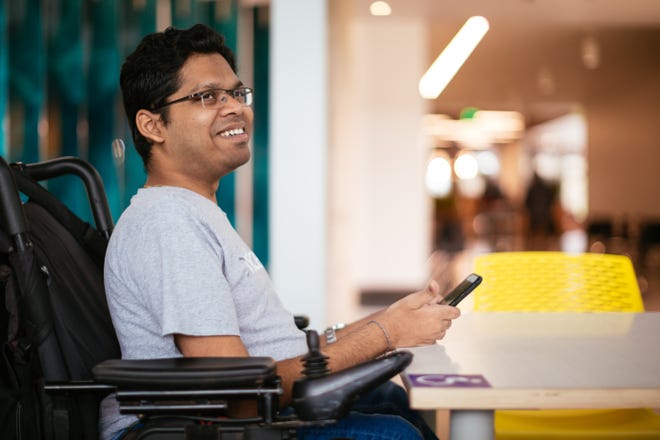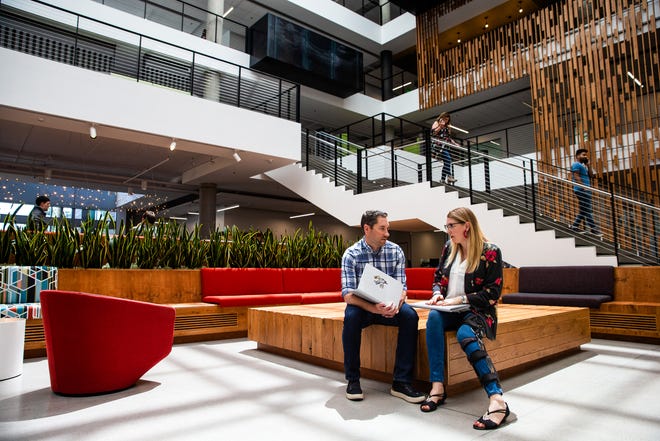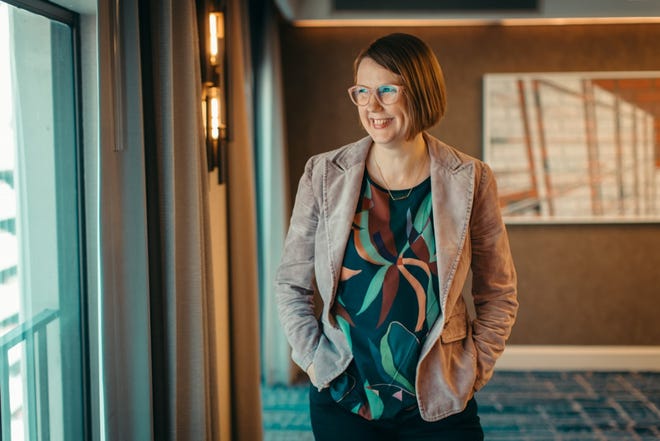How technology is transforming accessibility
source: USA today
In the tech industry, companies like Microsoft see disability as a strength and work with the disability community to help bridge the disability divide.
Jessica Levy, for Microsoft

Around the world, people with disabilities are impacted by what the World Bank has termed the disability divide: unequal access to education and employment. Over one billion people globally and 61 million people in the United States alone have one or more disabilities – such as being low-vision or blind, hard of hearing or deaf, having a speech disability, having limited mobility, or being part of the neurodivergent community.
Global Accessibility Awareness Day (GAAD), on May 19, is an annual day that draws attention to the necessity of digital access and inclusion for people with disabilities. The goal is to spark ideas and drive action year-round across all facets of people’s lives.
The use of technology, for example, has played an empowering role for people with disabilities. Looking forward, technology will continue to increase opportunities to close the disability divide.
Take Akiko Ishii, a company owner who lost her vision following surgery at age 30 but uses Seeing AI — a free A.I.-based app with modes for those who are blind or low-vision — to read printed text or currency. The app can also describe physical objects, product labels, colors and more. Seeing AI was by created by Microsoft engineer Saqib Shaikh, who is also blind.
As society emerges and rebuilds from the COVID-19 pandemic, more can — and must — be done to explore how technology can aid and accelerate progress on the disability divide.

Accessibility in the workplace: Neurodiverse hiring programs
At Microsoft, empowering those with disabilities extends to the office. The company has made it a priority to hire neurodiverse individuals — including those with autism spectrum disorder, anxiety, dyslexia, ADHD and other brain or behavioral-related conditions that may cause people to process information differently.
In an effort to connect those people with companies that understand and appreciate them, Microsoft and its partners at the Neurodiversity @ Work Employer Roundtable recently launched the Neurodiversity Career Connector, a job marketplace website with current opportunities across everything from computer engineering and sales to customer service.
Each company that lists jobs on the website already has a dedicated neurodiversity hiring program, with specially-trained recruiters that understand the job seekers’ interview needs, as well as developed support systems in place once hired.
The new job site is one of the ways Microsoft is addressing the disconnect between hiring practices and the situations in which neurodiverse people can thrive.
For example, some people struggle with the dynamics of a traditional job interview, which highlights social skills and forces candidates to quickly come up with answers to vague prompts such as “describe a challenge you’ve faced.” This is part of why the talent pool of neurodiverse candidates is vastly underutilized — currently, only 14% of working-age adults with autism, for example, have a paid job in the community.
Microsoft’s Inclusive Hiring team is also developing new interview formats and processes that improve the experience for candidates who identify as neurodiverse. One of their most unique innovations is a series of group exercises that candidates participate in within Minecraft: Education Edition. As candidates navigate through challenges designed in the popular open-sandbox video game, they’re able to demonstrate communication, teamwork and leadership skills in real-time, using either text or voice chat.
Microsoft’s workforce has already been enriched by implementing an inclusive hiring culture, with 7.1% of Microsoft employees in the U.S. choosing to self-identify as having a disability. Through its Neurodiversity @ Work Hiring program, the company has hired about 200 people across engineering and other business disciplines; people like Philip Jarvis, an engineer who has Asperger’s syndrome, who is making impressive contributions to Microsoft’s HoloLens team and working his dream job.

Accessible products: Adaptive, inclusive product design
Another benefit of a more diverse workforce? They’re better able to conceive of and design products aimed for diverse audiences.
Jenny Lay-Flurrie, chief accessibility officer at Microsoft, put it perfectly: Products should work across “the spectrum of being human.” That includes products whose primary purpose is entertainment — which is why Microsoft developers are helping to unlock the potential of the planet’s 400 million gamers with its Xbox adaptive controller, launched in 2018.
The controller allows gamers to customize it by connecting to external buttons, switches, joysticks and mounts or even a foot pedal. Players are able to make whatever accommodations they need in order to experience the joys and benefits of gaming. Its users include people like Dan Bertholomey, an avid gamer since age 10 who lost the use of his right arm and hand in a car accident and, with an adaptive controller, now enjoys the full range of capabilities and actions in all his favorite games.
Similarly, the company’s Surface Adaptive Kit is making it easier for people with vision-related disabilities to use technology. With three-dimensional stickers, port indicators and keycap labels, the set of tactile tools empower and enable users. And on May 10, Microsoft announced that it will introduce three exciting new adaptive accessories: the Adaptive Mouse, Adaptive Buttons, and Adaptive Hub.
For Mandy, a graphic designer that was born without her right hand and forearm, the new products will enable her to work more quickly and efficiently, allowing her to earn more as a result.
“The adaptive ecosystem is this really exciting new technology allows people with disabilities to fully use our bodies in functional ways that just wasn’t possible before,” she said in a video showcasing the new tools.
Recommitting to accessibility
Building on Microsoft’s 25 years of work on accessibility, the company is one year into an expanded commitment to find new ways to offer support. Their efforts are changing the way employees think about everything from hiring practices to product design.
Ultimately, the company is working to build an environment — both inside and outside of its offices — that helps people be their authentic selves and maximize their full potential. Because at the end of the day, that’s what technology is really about.
Learn more about Microsoft’s pledge to expand accessibility in technology, the workforce and the workplace.
